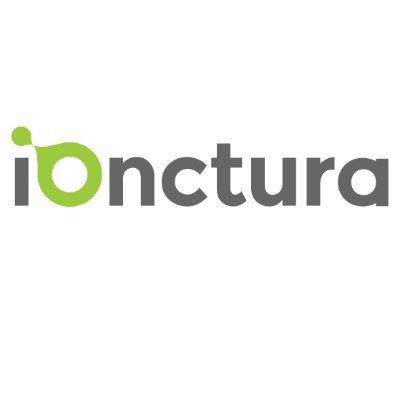预约演示
更新于:2025-05-07
Advanced Lung Non-Small Cell Squamous Carcinoma
晚期肺非小细胞鳞癌
更新于:2025-05-07
基本信息
别名 Advanced Lung Non-Small Cell Squamous Carcinoma、Advanced Non-Small Cell Squamous Lung Carcinoma、Advanced Squamous Non-Small Cell Lung Carcinoma + [2] |
简介 Non-small cell squamous lung carcinoma that has spread extensively to other anatomic sites or is no longer responding to treatment. |
关联
33
项与 晚期肺非小细胞鳞癌 相关的药物靶点 |
作用机制 PD-1抑制剂 |
在研机构 |
原研机构 |
最高研发阶段批准上市 |
首次获批国家/地区 中国 |
首次获批日期2025-02-08 |
靶点 |
作用机制 PDL1抑制剂 [+1] |
在研机构 |
原研机构 |
非在研适应症 |
最高研发阶段批准上市 |
首次获批国家/地区 中国 |
首次获批日期2024-04-30 |
靶点 |
作用机制 PD-1抑制剂 |
在研机构 |
原研机构 |
非在研适应症 |
最高研发阶段批准上市 |
首次获批国家/地区 中国 |
首次获批日期2018-12-24 |
48
项与 晚期肺非小细胞鳞癌 相关的临床试验NCT06879717
A Phase I/IIa Study of Roginolisib in Combination With Dostarlimab With or Without Docetaxel in Patients With Advanced Non-squamous NSCLC Who Have Progressed on Standard of Care Immune Checkpoint Therapy and Platinum Doublet Chemotherapy or Standard Immunotherapy Without Chemotherapy (PULMO-1)
The goal of this clinical trial is to learn how roginolisib works in combination with dostarlimab with or without docetaxel in adult patients with advanced non small-cell lung cancer. The main questions it aims to answer are:
To compare across the treatment arms the proportion of patients with a reduction in Treg cells To evaluate the safety and tolerability of roginolisib plus dostarlimab, with or without docetaxel
To compare across the treatment arms the proportion of patients with a reduction in Treg cells To evaluate the safety and tolerability of roginolisib plus dostarlimab, with or without docetaxel
开始日期2025-05-01 |
申办/合作机构 |
NCT06222489
Whole Body HER3 Quantification With Radiolabelled Patritumab Deruxtecan (HER3-DXd) PET/CT
Activity of patritumab deruxtecan (U3-1402; HER3-DXd) has been shown in a phase I/II study in patients with HER3 expressing breast cancer as well as in a phase I study in patients with EGFR TKI refractory EGFR mutation positive NSCLC with a preliminary ORR of 25%. HER3 expression can be seen in multiple tumor types and is therefore an attractive target for antibody drug conjugate (ADC) treatment. However, intra- and intertumor heterogeneity of HER3 expression might be substantial, as is seen for HER2, and might contribute to treatment failure or heterogeneous responses. In addition, HER3 expression is dynamic and has been shown to change over time.
In order to identify patients that may benefit most from treatment with patritumab deruxtecan, better knowledge of the in vivo behaviour of the drug is warranted. One way to visualize this behaviour is positron emission tomography (PET) imaging with radiolabelled antibodies (immune-PET). 89Zr-Patritumab deruxtecan PET/CT can assess HER3 expression non-invasively at a whole body level, including sites that may be difficult to biopsy. It also visualizes and quantifies biodistribution of patritumab deruxtecan, thereby obtaining valuable information for safety and toxicity analyses.
In order to identify patients that may benefit most from treatment with patritumab deruxtecan, better knowledge of the in vivo behaviour of the drug is warranted. One way to visualize this behaviour is positron emission tomography (PET) imaging with radiolabelled antibodies (immune-PET). 89Zr-Patritumab deruxtecan PET/CT can assess HER3 expression non-invasively at a whole body level, including sites that may be difficult to biopsy. It also visualizes and quantifies biodistribution of patritumab deruxtecan, thereby obtaining valuable information for safety and toxicity analyses.
开始日期2025-03-03 |
申办/合作机构 |
NCT06037733
Primary Tumor Radiotherapy Omitting Clinical Target Volume for Patients With Advanced Non Small Cell Lung Cancer Responded to Immunotherapy and Chemotherapy
The aim of this randomized study is to investigate pneumonitis, local tumor control, and survival outcomes of primary tumor radiotherapy omitting CTV for patients with advanced NSCLC responded to immunotherapy and chemotherapy
开始日期2024-03-13 |
申办/合作机构 |
100 项与 晚期肺非小细胞鳞癌 相关的临床结果
登录后查看更多信息
100 项与 晚期肺非小细胞鳞癌 相关的转化医学
登录后查看更多信息
0 项与 晚期肺非小细胞鳞癌 相关的专利(医药)
登录后查看更多信息
54
项与 晚期肺非小细胞鳞癌 相关的文献(医药)2025-03-01·Nature Reviews Clinical Oncology
Immunotherapy for advanced-stage squamous cell lung cancer: the state of the art and outstanding questions
Review
作者: Safi, Mohammed ; Rosell, Rafael ; Hirsch, Fred R ; Wang, Yibei ; Govindan, Ramaswamy ; Lu, Shun ; Peters, Solange ; Park, Keunchil ; Zhang, Jianjun J
2025-01-08·Japanese Journal of Clinical Oncology
Phase II study of carboplatin plus weekly paclitaxel with bevacizumab for non-squamous, non-small cell lung cancer with idiopathic interstitial pneumonia (Hanshin Cancer Group IP002)
Article
作者: Tokito, Takaaki ; Morita, Satoshi ; Nakakura, Akiyoshi ; Tamiya, Motohiro ; Kaneda, Toshihiko ; Watanabe, Kana ; Okamoto, Tadashi ; Oki, Masahide ; Nagata, Kazuma ; Katakami, Nobuyuki ; Hatachi, Yukimasa ; Amano, Yoshihiro
2024-11-01·European Journal of Cancer
Response to the Letter re: Real-world outcomes of Italian patients with advanced non-squamous lung cancer treated with first-line pembrolizumab plus platinum-pemetrexed
Letter
作者: Leonetti, Alessandro ; Tiseo, Marcello ; Perrone, Fabiana ; Caminiti, Caterina ; Puntoni, Matteo ; Maglietta, Giuseppe
66
项与 晚期肺非小细胞鳞癌 相关的新闻(医药)2025-04-30
·药事纵横
声明:因水平有限,错误不可避免,或有些信息非最及时,欢迎留言指出。本文仅作医疗健康相关药物介绍,非治疗方案推荐(若涉及);本文不构成任何投资建议。4月23日,康方生物(9926.HK)宣布,其全球首创双特异性抗体新药依沃西单抗注射液(商品名:依达方,PD-1/VEGF 双抗),在联合化疗对比替雷利珠单抗联合化疗,一线治疗晚期鳞状非小细胞肺癌(sq-NSCLC)的注册性 III 期临床研究(AK112-306/HARMONi-6)中取得佳绩。经独立数据监察委员会(IDMC)评估的期中分析显示强阳性结果:达到无进展生存期(PFS)的主要研究终点,研究结果具有统计学显著获益和重大临床获益。23日一早开盘,康方生物股价涨超13%,高见99.9港元,创历史新高。截至发稿,涨6.6%。在此次头对头试验中,依沃西联合化疗把替雷利珠单抗联合化疗作为对照组。康方生物表示,HARMONi-6临床试验共入组532例受试者,中央型鳞癌占比约为63%,与真实世界患者分布一致。研究数据表明,在意向治疗人群(ITT)中,依沃西联合化疗组的患者无进展生存期(PFS)相较对照组,获得了决定性胜出的阳性结果。在安全性方面,依沃西组总体表现良好,未发现新的安全性信号。与治疗相关的严重不良反应发生率以及三级及以上出血事件发生率与对照组相似。这意味着依沃西单抗在显著提升疗效的同时,并未增加患者的不良反应风险,为临床应用提供了重要的安全保障。资料显示,HARMONi-6研究是依沃西在非小细胞肺癌领域取得的第3个显著阳性结果的III期临床研究,填补了抗血管生成机制药物在sq-NSCLC中不可用的巨大临床空白。这也是依沃西第2个与PD-1疗法“头对头”取得阳性结果的III期临床研究。此前,依沃西在单药“头对头”III期临床研究中,证明疗效显著优于K药,被《柳叶刀》评价为“肿瘤免疫治疗领域的重大突破”。此外,高盛在一份研报中大胆预测:依沃西单抗2041年的峰值销售额约可达530亿美元。依沃西(PD-1/VEGF)是康方生物自主研发的全球首创PD-1/VEGF双特异性肿瘤免疫治疗药物,于2024年5月24日获得国家药品监督管理局(NMPA)批准上市,用于治疗经EGFR-TKI治疗后进展的EGFR突变的局部晚期或转移性非鳞状NSCLC。康方生物(9926.HK)是一家集研究、开发、生产及商业化全球首创或同类最佳创新生物新药于一体的领先企业。公司已开发了50个以上用于治疗肿瘤、自身免疫、炎症、代谢疾病等重大疾病的创新候选药物,24个候选药已进入临床(包括15个双抗/多抗/双抗ADC),7个新药已在商业化销售,4个新药4个适应症的上市申请处于审评审批阶段。在研管线2024年康方生物收入21.24亿元,同比下滑53.08%;归属股东应占溢利-5.145亿元人民币,较上年由盈利转为亏损。不过,其商业销售收入表现比较稳定,扣除分销成本后的商业销售收入总额为20.02亿元,同比增长24.88%。而这一增长主要得益于开坦尼®(卡度尼利,PD-1/CTLA-4)销售的持续增长以及依达方®(依沃西,PD-1/VEGF)在去年5月获批上市后带来的积极销售贡献。具体销售数据此次财报未予披露。参考资料:公司官网-END-2025CMC-CHINA药博会 • 展位火热预定中!
临床3期抗体药物偶联物申请上市引进/卖出临床结果
2025-04-27
·药通社
全球药物研发进展1. 康方生物PD-1「派安普利单抗」获FDA批准上市4月23日,美国FDA已批准康方生物的抗PD-1单抗派安普利单抗上市,联合顺铂或卡铂以及吉西他滨,用于复发或转移性非角化型鼻咽癌(NPC)成人患者的一线治疗。此外,FDA还批准了派安普利单抗单药用于接受含铂化疗及至少一种其他治疗方案后出现疾病进展的转移性非角化型鼻咽癌成人患者。派安普利单抗康方生物与正大天晴合作开发并商业化,其是采用IgG1亚型并进行Fc段改造的新型PD-1单抗。派安普利单抗(penpulimab-kcqx)联合顺铂或卡铂以及吉西他滨的疗效在研究AK105-304(NCT04974398)中进行了评估。派安普利单抗组的中位PFS为9.6个月(95% CI:7.1,12.5),安慰剂组为7.0个月(95% CI:6.9,7.3)(风险比[HR] 0.45 [95% CI:0.33,0.62],双侧p值<0.0001),在12个月的随访后,派安普利单抗组和安慰剂组分别有31%和11%的患者存活且无进展。尽管总生存期结果尚未成熟,仅报告了最终分析预设死亡人数的70%,但未观察到不利趋势。2. BMS精神分裂症辅助疗法Cobenfy III期试验结果失败4月22日,百时美施贵宝公司(Bristol Myers Squibb)今天公布了3期ARISE试验的顶线结果:该试验评估了Cobenfy(xanomeline/trospium chloride)作为非典型抗精神病药物的辅助疗法,用于治疗症状控制不佳的成人精神分裂症患者。然而,试验结果显示,与使用非典型抗精神病药的安慰剂相比,Cobenfy 作为非典型抗精神病药的辅助治疗在阳性和阴性综合征量表 (PANSS) 总分从基线到第 6 周变化的主要终点方面未达到统计学显着差异的阈值。Cobenfy是BMS于2023年以140亿美元收购Karuna Therapeutics的核心资产。尽管单药治疗精神分裂症已于2024年9月获批,此次辅助适应症受挫导致BMS股价盘后下跌5.6%。再鼎医药(持有大中华区权益)已于2024年底提交该药的上市申请。3. 阿斯利康重症肌无力抗体新药在中国获批4月22日,阿斯利康(AstraZeneca)宣布瑞利珠单抗注射液(ravulizumab)的上市申请已获得中国国家药监局(NMPA)批准,与常规治疗药物联合用于治疗抗乙酰胆碱受体(AChR)抗体阳性的成人全身型重症肌无力(gMG)患者。瑞利珠单抗是一款长效补体C5蛋白抑制剂。通过每八周一次的给药方式,可改善患者的生活质量,帮助减轻治疗负担。在美国,该产品已经获得FDA批准治疗多种自身免疫性疾病(商品名:Ultomiris),包括阵发性睡眠性血红蛋白尿(PNH)、非典型溶血性尿毒症综合征(aHUS)、重症肌无力、视神经脊髓炎谱系疾病(NMOSD)等。4. 依沃西又一项III期临床成功,头对头打败替雷利珠单抗4月23日,康方生物宣布,全球首创双特异性抗体新药依沃西单抗注射液(商品名:依达方,PD-1/VEGF双抗)在其注册性III期临床试验AK112-306/HARMONi-6中取得了重要突破。该研究评估了依沃西单抗联合化疗与替雷利珠单抗联合化疗在一线治疗晚期鳞状非小细胞肺癌(sq-NSCLC)中的疗效,期中分析结果显示,依沃西联合化疗组在无进展生存期(PFS)方面显著优于对照组,且结果具备统计学显著性和临床获益。5. 诺和诺德向美国FDA提交口服版GLP-1减肥药物上市申请当地时间4月21日,诺和诺德宣布已向美国FDA提交口服版GLP-1减肥药物的上市申请。这款药物是其注射型减肥针Wegovy(司美格鲁肽)的口服版本,距离2023年5月公布关键3期临床试验成功结果已过去近两年。根据试验数据,口服司美格鲁肽最高剂量(50mg)组患者在64周内体重减轻15%。尽管诺和诺德曾计划在2023年底前提交申请,但受限于当时Wegovy和糖尿病药物Ozempic的产能瓶颈,口服剂型的生产优先级被迫让位于注射剂供应。公司发言人透露,更多细节将在5月7日的季度财报中披露。6. 治疗眉间纹,艾伯维递交新药上市申请4月24日,艾伯维(AbbVie)宣布,已向美国FDA提交了TrenibotE(trenibotulinumtoxinE)的生物制品许可申请(BLA),用于治疗中重度眉间纹。根据新闻稿,若获批准,TrenibotE将成为首款血清型E神经毒素,为患者提供一种起效迅速、作用时间较短的神经毒素选择。此次BLA的提交主要依据逾2100名接受TrenibotE治疗患者的临床研究数据支持。相关临床项目包括两项关键的3期临床试验(M21-500和M21-508),用于评估TrenibotE治疗中重度眉间纹的疗效,以及一项3期开放标签安全性研究(M21-509)。7. 强生「埃万妥单抗」在华获批新适应症4月25日,强生宣布EGFR/c-MET双抗锐珂(埃万妥单抗)获NPMA批准新适应症的上市申请均已获得国家药监局批准,与卡铂和培美曲塞联合给药,适用于治疗携带表皮生长因子受体(EGFR)19号外显子缺失或21号外显子L858R置换突变且在EGFR酪氨酸激酶抑制剂治疗期间或之后疾病进展的局部晚期或转移性非鳞状非小细胞肺癌(NSCLC)成人患者。今年2月,埃万妥单抗已在华获批用于治疗携带EGFR 20号外显子插入突变的局部晚期或转移性非小细胞肺癌成人患者的一线治疗。8. 君实生物抗PD-1单抗获批第12项适应症4月25日,中国国家药监局(NMPA)官网刚刚发布的批件信息显示,君实生物的抗PD-1抗体特瑞普利单抗注射液一项新适应症上市申请已获得批准。根据君实生物此前公开资料,此次获批的适应症为用于不可切除或转移性黑色素瘤一线治疗。公开资料显示,这是特瑞普利单抗在中国获批的第12项适应症。此前,特瑞普利单抗已经于2018年在中国获批用于晚期黑色素瘤的二线及以上治疗。本次新适应症的上市申请主要基于MELATORCH研究。9. 诺诚健华「奥布替尼」新适应症获批,一线治疗CLL/SLL4月25日,国家药监局(NMPA)官网显示,诺诚健华的BTK抑制剂奥布替尼(商品名:宜诺凯)获批新适应症,用于一线治疗慢性淋巴细胞白血病(CLL)/小淋巴细胞淋巴瘤(SLL)患者(CLL/SLL)成人患者。至此,奥布替尼在国内已获批4项适应症,前3项适应症为:1)既往至少接受过一种治疗的复发或难治性CLL/SLL成人患者;2)既往至少接受过一种治疗的复发或难治性套细胞淋巴瘤(MCL)成人患者;3)既往至少接受过一种治疗的复发或难治性边缘区淋巴瘤(MZL)成人患者。10. 康方生物「依沃西」新适应症获批,一线NSCLC4月25日,中国国家药监局(NMPA)官网最新公示,康方生物PD-1/VEGF双抗依沃西的新适应症上市申请已获得批准。根据中国国家药监局药品审评中心(CDE)优先审评公示信息可知,该药本次获批的适应症为:单药用于PD-L1阳性[肿瘤比例评分(TPS)≥1%]的表皮生长因子受体(EGFR)基因突变阴性和间变性淋巴瘤激酶(ALK)阴性的局部晚期或转移性非小细胞肺癌(NSCLC)的一线治疗。此次批准是基于头对头对照Keytruda的三期临床AK112-303/HARMONi-2的数据。在ITT人群中,依沃西单抗组和Keytruda组mPFS分别为11.14个月、5.82个月,HR-0.51,疾病进展或死亡风险降低49%。39%成熟度时进行的OS期中分析(此次分析分配的α值经纬0.0001)显示,HR=0.77,死亡风险降低22.3%。更多资讯,请滑动下方文字奥赛康「利厄替尼」获批新适应症,一线治疗NSCLC4月25日,国家药监局(NMPA)官网显示,奥赛康药业的利厄替尼片(商品名:奥壹新)获批新适应症,用于一线治疗具有表皮生长因子受体(EGFR)外显子19缺失(19DEL)或外显子21置换突变(L858R)的局部晚期或转移性非小细胞肺癌(NSCLC)成人患者。利厄替尼(ASK120067)是由中国科学院上海药物研究所、中国科学院广州生物医药与健康研究院、江苏奥赛康药业有限公司联合开发的具有自主知识产权、全新分子实体、活性显著的口服的第三代EGFR-TKI。今年1月,利厄替尼首次获批上市。辉瑞「阿昔替尼」在华获批新适应症,一线治疗肾细胞癌4 月 25 日,辉瑞宣布,其口服靶向药英立达(阿昔替尼片)已获得中国 NMPA 批准,联合特瑞普利单抗用于中高危的不可切除或转移性肾细胞癌(RCC)患者的一线治疗,这也是中国肾癌治疗领域首个且唯一获批的一线靶免联合治疗方案。阿昔替尼是一种口服的、作用于血管内皮生长因子受体(VEGFR)1,2 和 3 的强效和高选择性酪氨酸激酶抑制剂,可抑制肿瘤生长、血管新生和肿瘤进展。该药于 2015 年 4 月在中国首次获批,用于既往接受过一种酪氨酸激酶抑制剂或细胞因子治疗失败的进展期肾细胞癌的成人患者。治疗成人肢端肥大症,长效疗法在中国获批上市4月25日,中国国家药监局(NMPA)官网最新公示,Recordati集团中国全资子公司锐康迪医药申报的注射用双羟萘酸帕瑞肽微球的上市申请已获得批准。根据NMPA药品审评中心(CDE)优先审评公示,该药本次获批用于治疗无法手术或手术后未治愈和通过另一种生长抑素类似物治疗控制不佳的成人肢端肥大症患者。公开资料显示,这是一款长效帕瑞肽产品(pasireotide pamoate)。此前,博鳌乐城维健罕见病临床医学中心已经引进该产品治疗肢端肥大症患者。同源康医药小分子新药递交Pre-NDA申请,拟治疗肺癌脑转移4月24日,同源康医药宣布,已于近日向中国药监局药品审评中心(CDE)提交了其在研1类新药甲磺酸艾多替尼片(TY-9591)的Pre-NDA申请,这是一款拟治疗针对非小细胞肺癌(NSCLC)脑转移患者的第三代EGFR-TKI,其能够不可逆地结合某些EGFR突变体(包括21外显子L858R突变、19外显子缺失、L858R/T790M突变和19外显子缺失╱T790M突变),最终抑制癌细胞的增殖和转移。该产品是通过对奥希替尼进行改良而开发出来的,目的是提高其安全性,允许更大的给药剂量,从而有可能提高疗效,以及提高血脑屏障的通过率。同源康医药新闻稿表示,本次Pre-NDA申请是基于TYKM1601202研究(ESAONA)的结果。研究结果显示,甲磺酸艾多替尼片对比奥希替尼的主要研究终点(IRC评估的颅内客观缓解率)达到了显著优效结果。同时,甲磺酸艾多替尼片显示出良好的安全耐受性,未发现新的安全性风险。创新小分子两项3期临床试验结果积极,今年递交新药申请4月23日,Sebela Pharmaceuticals旗下Braintree Laboratories宣布,在研钾离子竞争性酸阻断剂(P-CAB)tegoprazan在两项关键性3期临床试验中获得积极顶线结果。在治疗糜烂性食管炎(EE)和非糜烂性胃食管反流病(NERD)的两项关键性研究中,tegoprazan达到所有主要和次要终点。包括在第2周和第8周,在不同严重程度的EE患者中,tegoprazan在实现完全食管愈合方面与质子泵抑制剂相比具有统计学优势。在NERD试验中,tegoprazan对夜间和日间的烧心及反流症状均实现了完全缓解。EE研究的维持治疗阶段将于2025年第三季度完成,Braintree计划于2025年第四季度向FDA提交包括EE和NERD适应症的新药申请。翰森制药B7-H4 ADC拟纳入突破性治疗4 月 24 日,CDE 官网显示,翰森注射用 HS-20089 拟纳入突破性治疗品种,用于治疗铂耐药复发上皮性卵巢癌、输卵管癌或原发性腹膜癌患者。HS-20089 是一种新型 B7-H4 ADC,此前曾于 2023 年 10 月授权 GSK,GSK 获得该药全球独家权利(中国大陆、香港、澳门和台湾除外),而翰森则获得 8500 万美元的预付款,并有资格获得高达 14.85 亿美元的里程碑收益。在 HS-20089 商业化后,GSK 还将根据中国大陆、香港、澳门和台湾以外的全球净销售额支付分级特许权使用费。赛诺菲TNF-α/OX40L双抗II期研究成功4月24日,赛诺菲在公布一季度业绩时透露,Brivekimig(SAR442970)治疗化脓性汗腺炎(HS)的II期研究达到主要终点。Brivekimig是赛诺菲研发的一款TNF-α/OX40L双抗药物,于2023年5月启动针对HS的II期概念验证研究。结果显示,在未接受过生物制剂治疗的中重度HS患者中,相比于安慰剂组,Brivekimig(每2周1次)组达到HiSCR50的患者比例具有临床意义。在其他指标上,Brivekimig组也实现了具有临床意义的改善。此外,在28周治疗期内,Brivekimig的安全性符合预期,未发现新的安全性信号。强生FcRn抗体国内申报上市4月23日,强生FcRn抗体尼卡利单抗注射液的上市申请获得NMPA受理。2024年11月,尼卡利单抗已被纳入优先审评程序,用于治疗自身抗体阳性的全身型重症肌无力(gMG)成人患者和青少年患者(大于12岁)。上市申请是基于三期临床Vivacity-MG3的数据。经过24周治疗,Nipocalimab+标准治疗、安慰剂+标准治疗组,重症肌无力日常生活量表(MG-ADL)分别下降4.70、3.25,差值Wie2.45,p值为0.002。重症肌无力量表(QMG)分别下降4.86、2.05,差值为2.81,p值小于0.001。2020年8月1日,强生以65亿美元收购生物技术公司Momenta,获得Nipocalimab当时处于三期临床阶段,在内的自免研发管线。正大天晴「贝莫苏拜单抗」+「安罗替尼」新适应症申报上市4月23日,中国国家药监局药品审评中心(CDE)官网最新公示,正大天晴申报的贝莫苏拜单抗注射液和盐酸安罗替尼胶囊的多项新适应症上市申请获得受理。贝莫苏拜单抗是一款创新人源化抗PD-L1单克隆抗体,盐酸安罗替尼胶囊是一款口服新型小分子多靶点酪氨酸激酶抑制剂。联合疗法于2024年5月在中国获批,用于一线治疗广泛期小细胞肺癌(ES-SCLC)患者。于2024年11月在中国获批第二项适应症,用于治疗复发性或转移性子宫内膜癌。2024年8月,贝莫苏拜单抗联合安罗替尼用于一线治疗晚期不可切除或转移性肾细胞癌(RCC)的上市申请也已经获CDE受理。康乐卫士三价HPV疫苗申报上市,已纳入优先审评4 月 23 日,CDE 官网显示,康乐卫士重组三价人乳头瘤病毒(16/18/58型)疫苗(大肠杆菌)上市申请获受理,用于预防 HPV 16/18/58 型相关的持续感染和宫颈癌等疾病。这是国内首个申报上市的国产三价 HPV 疫苗。此前 3 月,该产品已被纳入优先审评品种名单。相较于目前已上市的二价或四价 HPV 疫苗,该三价 HPV 疫苗将对东亚地区女性宫颈癌的保护范围从 70% 提高至 78%。诺诚健华口服新药「卓乐替尼片」拟纳入优先审评4月23日,中国国家药监局药品审评中心(CDE)官网最新公示,诺诚健华申报的1类新药卓乐替尼片上市申请拟纳入优先审评,拟定适应症为:治疗成人和12岁及以上青少年实体瘤患者:-携带神经营养酪氨酸受体激酶(NTRK)融合基因 -患有局部晚期、转移性疾病或手术切除可能导致严重并发症的以及-无满意替代治疗或既往治疗失败的患者。卓乐替尼片(zurletrectinib)是诺诚健华在研的第二代泛TRK抑制剂,该项上市申请已于几日前(4月16日)获得CDE受理。百时美施贵宝PD-1抑制剂在中国获批新适应症4月22日,百时美施贵宝宣布,PD-1抑制剂欧狄沃®(纳武利尤单抗注射液)获得中国国家药品监督管理局(NMPA)批准新增适应症:联合含铂化疗作为新辅助治疗,术后继续以欧狄沃作为单药辅助治疗,用于治疗可手术切除的Ⅱ、ⅢA和ⅢB期且无已知表皮生长因子受体(EGFR)突变或间变性淋巴瘤激酶(ALK)重排的成人非小细胞肺癌(NSCLC)患者。该获批基于CheckMate-77T研究,这是继CheckMate-816后,又一项证实欧狄沃方案用于可切除非小细胞肺癌,可带来显著获益的III期研究;欧狄沃也是目前唯一在中国获批两项可切除NSCLC适应症的免疫治疗药物,覆盖围术期与单纯新辅助治疗,为接受过欧狄沃新辅助治疗方案及手术切除的患者提供了更丰富的后续治疗选择。再鼎医药「瑞普替尼」新适应症申报上市4月21日,中国国家药监局药品审评中心(CDE)官网最新公示,由百时美施贵宝公司申报的瑞普替尼胶囊新适应症上市申请已获得受理。瑞普替尼(repotrectinib)是靶向作用于ROS1及NTRK致癌驱动基因的新一代酪氨酸激酶抑制剂(TKI),再鼎医药拥有该产品在大中华区的独家开发及商业化权。该药本次申报上市的适应症为:用于治疗携带神经营养酪氨酸受体激酶(NTRK)基因融合的实体瘤成人患者,该类患者为局部晚期、转移性,或手术切除可能导致严重并发症的患者,且这些患者在接受既往治疗后出现疾病进展,或缺乏有效的治疗方案选择。针对该项适应症,瑞普替尼此前已经被CDE正式纳入优先审评。康方启动AK112+多西他赛肺癌三期临床,挑战PD-1耐药后线治疗近日,康方生物在clinical trials网站上,登记了一项PD-1/VEGF双抗药物Ivonescimab (AK112),联合多西他赛在PD-1/L1疗法治疗进展或失败的非小细胞肺癌患者中,启动一项三期临床试验AK112-305\HARMONi-8A(NCT06928389),该临床预计于2025年6月启动,入组人数为536例。此项临床也为康方为AK112在国内启动的第9项三期临床,同时也是非小细胞肺癌中启动的第5项三期临床,更是首次将PD-1/VEGF疗法拓展至PD-1/L1疗法耐药后的后线治疗,显示出康方对于产品不断增强的信心。Biogen启动CD38抗体IgAN肾病三期临床,天境生物拥有中国权益4月20日,Biogen在clinical trials网站上,登记了一项CD38抗体药物Felzartamab,在成人IgAN肾病患者中,启动一项三期临床试验NCT06935357,该临床预计于2025年5月启动,入组人数为454例。该项临床三期以安慰剂作为对照组,Felzartamab采用静脉注射给药,在全人群的基础上,该临床还对eGFR ≥ 20 及<30 mL/min/1.73m^2的患者进行独立队列的设计,临床主要终点为36周的Urine Protein: Creatinine Ratio (UPCR)变化率。2025年4月8日,天境生物宣布与Biogen(渤健)就Felzartamab(菲泽妥单抗),在中国的两项三期注册性临床研究达成合作,共同推进菲泽妥单抗治疗IqA肾病(IGAN)和原发性膜性肾病(PMN)的开发与全球(包括中国)产品注册。天境生物拥有菲泽妥单抗在大中华地区(包括中国大陆、台湾、香港和澳门)所有适应症的独家开发、生产和商业化权益。Enhertu联合疗法一线击败曲帕双靶,III期DESTINY-Breast09研究成功4月21日,阿斯利康宣布其和第一三共合作开发的Enhertu(德曲妥珠单抗)与帕妥珠单抗联合治疗方案在III期DESTINY-Breast09研究中,相较于当前一线标准治疗方案(紫杉烷+曲妥珠单抗+帕妥珠单抗,THP),显著改善了HER2阳性转移性乳腺癌患者的无进展生存期(PFS),具有统计学意义和临床意义。DESTINY-Breast09研究结果显示,Enhertu联合帕妥珠单抗治疗组在所有预先指定患者亚组中均观察到PFS改善。关键次要终点总生存期(OS)在计划进行中期分析时尚不成熟,但与THP治疗组相比,Enhertu联合治疗组的中期OS数据显示出更有利的早期趋势。另一方面,评估Enhertu单药与THP治疗的第二组研究仍对患者和研究者设盲,并将继续进行至最终PFS分析。一线治疗三阴乳腺癌,吉利德Trop2 ADC+PD-1三期临床成功4月21日,吉利德宣布Trop2 ADC新药Trodelvy+PD-1抗体K药联合一线治疗转移性三阴乳腺癌的关键三期临床获得成功,主要终点mPFS相比于化疗+PD-1对照组显著延长,这也是mTNBC首个达到PFS终点的PD-1+Trop2 ADC联合治疗的三期临床试验。Trodelvy为首个获批二线及以上治疗mTNBC的Trop2 ADC新药,此次又在一线治疗中达到PFS主要终点,OS作为关键次要终点其数据尚未成熟,具体数据将在后续的医学会议上披露。国家药监局正式受理渤健高剂量诺西那生疗法上市申请4月21日,渤健中国今日宣布,旗下高剂量诺西那生治疗方案的上市申请已获得CDE的受理,用于治疗脊髓性肌萎缩症(Spinal Muscular Atrophy, SMA)。值得一提的是,渤健中国不仅参与了该治疗方案的全球国际多中心研究,还实现了在中国与欧美日等国家同步递交申请。诺西那生是一种以反义寡核苷酸(ASO)为核心机制的药物,它通过鞘内注射给药,可直接作用于疾病起源部位,以精准地发挥治疗效应,从而改善运动功能、提高生存率,改变SMA的疾病进程。2019年2月,NMPA以优先审评方式,批准诺西那生钠注射液(规格:5ml:12mg)上市,成为中国首个治疗SMA的药物。2021年底,诺西那生被纳入国家医保,极大提升了SMA患者的治疗可及性。恒瑞医药创新药HRS-9813获批临床,用于进展性肺纤维化近日,恒瑞医药子公司广东恒瑞医药有限公司收到国家药品监督管理局核准签发的《药物临床试验批准通知书》,批准1类新药HRS-9813胶囊开展用于进展性肺纤维化(progressive pulmonary fibrosis,PPF)的临床试验。经查询,目前国内外尚无同类药物获批上市。HRS-9813是由恒瑞医药自主研发的1类创新药。HRS-9813能够阻碍纤维细胞被招募至肺损伤部位,最终抑制纤维细胞分化为肌成纤维细胞,降低肺纤维化进程。此前HRS-9813缓释胶囊已获批开展用于IPF适应症的临床试验。百奥泰PD-1/4-1BB双特异性抗体在中国获批临床4月21日,中国国家药监局药品审评中心(CDE)官网最新公示,百奥泰生物1类新药注射用BAT7111获得临床试验默示许可,拟开发治疗晚期实体瘤。根据百奥泰生物公告可知,BAT7111是其开发的PD-1/4-1BB双特异抗体。本次是该产品首次在中国获批IND。BAT7111由重组人源化抗PD-1抗体和全人源4-1BB单域抗体组成,既可以阻断PD-1/PD-L1免疫抑制通路,又可以通过4-1BB激活免疫细胞,从而达到解除免疫抑制和激活免疫抗肿瘤的协同效应。上下滚动查看更多全球交易合作动态1. 映恩生物与阿斯利康达成临床研究合作,探索非小细胞肺癌治疗4月25日,映恩生物(DualityBio)宣布与阿斯利康(AstraZeneca)建立合作,双方将就映恩生物自主研发的HER3靶向抗体偶联药物(ADC)DB-1310与阿斯利康的第三代EGFR抑制剂奥希替尼(osimertinib)的联合疗法开展临床探索。 根据协议条款,阿斯利康将向映恩生物提供奥希替尼,开展一项1/2期探索性研究,用于评估DB-1310与奥希替尼二线联合治疗EGFR突变晚期非小细胞肺癌(NSCLC)的潜力。2. 超5.5亿美元!荃信生物一款长效双抗疗法达成国际授权合作4月24日,荃信生物宣布与Caldera Therapeutics就荃信生物自主研发的临床前阶段长效自免双抗QX030N签订授权许可协议,授予Caldera开发及商业化QX030N的全球独家许可。根据协议, Caldera获授予研究、开发、注册、生产及商业化QX030N的全球独家权益。作为回报,荃信生物或其指定联属公司将获得1000万美元一次性、不可退还及不可抵扣的预付款及Caldera约24.88%的股权;在达成特定临床开发、监管及商业里程碑的前提下,荃信生物还可获得最多5.45亿美元的额外付款;此外,荃信生物有权在QX030N首次商业销售后的一段特定时间内收取销售净额的分级特许权使用费。3. 德国默克拟以35亿美元收购SpringWorks4月24日,SpringWorks Therapeutics的股价上涨9%市值达到33.69亿美元,此前《华尔街日报》报道称,德国默克公司即将以35亿美元收购这家美国生物制药公司。据知情人士透露,两家公司已就接近每股47美元的价格达成一致。如果谈判不会在最后一刻遇到任何障碍,协议最早可能在下周一完成。SpringWorks于2023年底推出了第一种药物Ogsiveo,这是一种治疗成人硬纤维瘤的药物,硬纤维瘤是一种发生在结缔组织中的罕见肿瘤。截至周四,该公司的市值略高于30亿美元。2024年SpringWorks营收1.91亿美元,其中Ogsiveo贡献1.72亿美元。今年FDA批准MEK抑制剂GOMEKLI™(mirdametinib)用于治疗无法完全切除的有症状NF1-PN的成人和儿童患者。4. 罗氏公布一季度财报,Q1营收154亿瑞士法郎4 月 24 日,罗氏发布 2025Q1 财报,一季度营收 154.40 亿瑞士法郎,同比增长 6%(按固定汇率 CER 计算),制药部门营收达到 119.49 亿瑞士法郎,同比增长 8%。制药部门主要的增长动力是主要增长动力是 Phesgo(曲帕皮下注射)、Vabysmo(法瑞西单抗)、Xolair(奥马珠单抗)和 Hemlibra(艾美赛珠单抗),总销售额达 36 亿瑞士法郎,同比增长了 7 亿瑞士法郎。从地区来看,制药部门美国市场销售额增长 6%,欧洲的销售额增长了 5%,日本的销售额增长了 3%,国际地区销售额增长 18%,其中中国市场表现强劲,市场销售额增长 14%,主要得益于 Xofluza(玛巴洛沙韦)和 Phesgo 的需求。5. 7.65亿美元!基因泰克合作开发针对自身免疫性疾病的T细胞靶向疗法4月23日,马萨诸塞州剑桥,Repertoire®Immune Medicines是一家率先发现和开发可编程T细胞靶向免疫药物的生物技术公司,宣布已与罗氏旗下基因泰克签订合作和许可协议。根据协议条款,Repertoire将利用其DECODE™平台领导靶点发现活动,探索大型抗原空间,基因泰克将负责临床前和临床开发,以及包含靶点发现工作的创新疗法的全球商业化。汇辑有资格获得3500万美元的预付款,以及高达7.3亿美元的额外开发、监管和商业里程碑,以及分层版税。6. 5.73亿美元!勃林格殷格翰引进一款新型合成致死抑制剂4月23日,勃林格殷格翰宣布与专注于开发新型合成致死方法的精准肿瘤学公司Tessellate Bio达成了一项研究合作和全球许可协议,将共同致力于为癌症患者开发一流的口服精准治疗。与Tessellate Bio的新合作旨在开发针对依赖于端粒选择性延长(ALT)的肿瘤生长的治疗方法。这种特征存在于所有癌症的10-15%中,与预后不良和缺乏靶向治疗有关。根据协议条款,Tessellate Bio有权获得近期付款,包括前期许可费、研究资金和技术里程碑付款,以及下游基于成功的里程碑付款,总交易价值超过5亿欧元(约5.73亿美元)。7. 再生元达成超30亿美元协议,强化美国本土产能4月22日,CDMO公司富士胶片Diosynth 宣布与再生元(Regeneron Pharmaceuticals, Inc.)签署一项为期10年、价值超过30亿美元的美国生产供应协议。这一里程碑式的合作将显著提升再生元行业领先的生物药品的美国本土产能,旨在更好地保障全球数百万患者及时获得关键药物。根据协议条款,富士胶片 Diosynth 将在未来十年内,通过其位于北卡罗来纳州霍利斯普林斯(Holly Springs)新建的大规模生物制药生产基地及其现有和计划中的扩建项目,为再生元提供美国本土的生产制造服务。该基地预计将于2025年晚些时候投入运营。8. 罗氏将在未来五年内向美国投资500亿美元4月22日,瑞士罗氏公司宣布,将在未来五年内向美国投资500亿美元。这项巨额投资旨在进一步加强罗氏在美国的业务布局,涵盖制药和诊断两大部门,预计将创造超过 12,000 个新的就业机会。此次投资将包括在印第安纳州、宾夕法尼亚州、马萨诸塞州和加利福尼亚州新建最先进的研发中心以及新建和扩建的生产基地,此外还有一个新的选址将在近期公布。这些投资将直接创造 1,000 个罗氏的工作岗位,并支持新增美国制造能力带来超过 11,000 个相关职位。作为此次投资的一部分,罗氏将扩大其在美国八个州的 24 个运营场所中超过 25,000 名员工的现有规模。9. 全周期智控慢病,诺和诺德与京东健康开启战略合作4月21日,北京——全球领先的生物制药公司诺和诺德与京东健康在北京正式签署战略合作协议,标志着双方在糖尿病和体重管理领域的合作进入新阶段。依托诺和诺德百年深耕慢病领域的专业经验和创新治疗方案,并借助京东健康的全场景医疗服务能力,双方将携手打造肥胖症公众科普专区,助力糖尿病一站式诊疗,全面赋能慢病管理数字化转型升级。10. 因CRISPR RNP技术专利,韩国公司同时起诉业内3家企业4月21日,韩国的生物科技公司ToolGen在英国对Vertex Pharmaceuticals及其商业生产合作伙伴Lonza和RoslinCT提起专利侵权诉讼。此次诉讼涉及Vertex的基因编辑疗法CASGEVY®。ToolGen号称在全球范围内拥有CRISPR RNP(核糖核蛋白复合物)技术的专利,包括在欧洲。来自:智慧芽医药小编投稿/企业合作/内容沟通:华籍美人(Ww_150525)*添加请注明备注及来意
上市批准临床3期临床结果并购申请上市
2025-04-26
点击蓝字关注我们本周,热点很多。首先是审评审批方面,国内来看,多个药获批一线治疗某个适应症,康方生物依沃西单抗获批一线治疗PD-L1阳性NSCLC,诺诚健华奥布替尼一线治疗CLL/SLL以及奥赛康利厄替尼一线治疗NSCLC。国外而言,康方生物/正大天晴PD-1单抗在美国获批上市以及诺和诺德抢先礼来递交口服GLP-1减重上市申请;其次是研发方面,最值得关注的就是,依沃西头对头替雷利珠单抗Ⅲ期成功;最后是交易及投融资方面,荃信生物长效自免双抗出海,总交易额约5.55亿美元。本期盘点包括审评审批、研发以及交易及投融资三大板块,统计时间为2025.4.21-4.25,包含28条信息。 审评审批NMPA上市批准1、4月22日,NMPA官网显示,百时美施贵宝的PD-1抑制剂纳武利尤单抗注射液(欧狄沃)获批新适应症:联合含铂化疗作为新辅助治疗,术后继续以欧狄沃作为单药辅助治疗,用于治疗可手术切除的Ⅱ、ⅢA和ⅢB期且无已知表皮生长因子受体(EGFR)突变或间变性淋巴瘤激酶(ALK)重排的成人非小细胞肺癌(NSCLC)患者。2、4月22日,NMPA官网显示,阿斯利康的瑞利珠单抗注射液(ravulizumab)获批上市,与常规治疗药物联合用于治疗抗乙酰胆碱受体(AChR)抗体阳性的成人全身型重症肌无力(gMG)患者。瑞利珠单抗是一款长效补体C5蛋白抑制剂,每八周一次的给药方式。3、4月25日,NMPA官网显示,君实生物抗PD-1抗体特瑞普利单抗注射液第12项适应症获批,用于不可切除或转移性黑色素瘤一线治疗。特瑞普利单抗已在中国内地获批11项适应症,涵盖黑色素瘤、鼻咽癌、尿路上皮癌、食管鳞癌、非小细胞肺癌、肾癌、小细胞肺癌、三阴性乳腺癌、肝细胞癌等适应症。4、4月25日,NMPA官网显示,Recordati国全资子公司锐康迪医药申报的注射用双羟萘酸帕瑞肽微球获批上市,用于治疗无法手术或手术后未治愈和通过另一种生长抑素类似物治疗控制不佳的成人肢端肥大症患者。这是一款长效帕瑞肽产品(pasireotidepamoate)。5、4月25日,NMPA官网显示,康方生物的PD-1/VEGF双抗依沃西单抗注射液新适应症获批,单药用于PD-L1阳性[肿瘤比例评分(TPS)≥1%]的表皮生长因子受体(EGFR)基因突变阴性和间变性淋巴瘤激酶(ALK)阴性的局部晚期或转移性非小细胞肺癌(NSCLC)的一线治疗。6、4月25日,NMPA官网显示,奥赛康药业1类新药利厄替尼片第二项适应症获批,具有EGFR外显子19缺失(19DEL)或外显子21置换突变(L858R)的局部晚期或转移性非小细胞肺癌(NSCLC)成人患者的一线治疗。利厄替尼是具有全新分子结构的第三代表皮生长因子受体酪氨酸激酶抑制剂(EGFR-TKI)。7、4月25日,NMPA官网显示,诺诚健华的奥布替尼片一项新适应症获批,用于一线治疗慢性淋巴细胞白血病(CLL)/小淋巴细胞淋巴瘤(SLL)。奥布替尼是诺诚健华研发的一款不可逆布鲁顿酪氨酸激酶(BTK)抑制剂,可用于治疗淋巴瘤及自身免疫性疾病。2020年12月,奥布替尼首次在中国获批。8、4月25日,NMPA官网显示,强生的EGFR/c-MET双抗埃万妥单抗(锐珂)获批新适应症,与卡铂和培美曲塞联合给药,治疗携带表皮生长因子受体(EGFR)19号外显子缺失或21号外显子L858R置换突变且在EGFR酪氨酸激酶抑制剂治疗期间或之后疾病进展的局部晚期或转移性非鳞状非小细胞肺癌(NSCLC)成人患者。2025年2月,已获批用于治疗携带EGFR20号外显子插入突变的局部晚期或转移性非小细胞肺癌成人患者的一线治疗。9、4月25日,NMPA官网显示,辉瑞的阿昔替尼片(英立达)获批新适应症,联合特瑞普利单抗用于中高危的不可切除或转移性肾细胞癌(RCC)患者的一线治疗。阿昔替尼是一种口服的、作用于血管内皮生长因子受体(VEGFR)1,2和3的强效和高选择性酪氨酸激酶抑制剂,于2015年4月在中国首次获批。申请10、4月21日,CDE官网显示,百时美施贵宝的瑞普替尼胶囊新适应症申报上市,用于治疗携带神经营养酪氨酸受体激酶(NTRK)基因融合的实体瘤成人患者,该类患者为局部晚期、转移性,或手术切除可能导致严重并发症的患者,且这些患者在接受既往治疗后出现疾病进展,或缺乏有效的治疗方案选择。瑞普替尼是靶向作用于ROS1及NTRK致癌驱动基因的新一代酪氨酸激酶抑制剂(TKI),再鼎医药拥有该产品在大中华区的独家开发及商业化权。11、4月23日,CDE官网显示,康乐卫士的重组三价人乳头瘤病毒(16/18/58型)疫苗(大肠杆菌)申报上市,用于预防HPV16/18/58型相关的持续感染和宫颈癌等疾病。这是国内首个申报上市的国产三价HPV疫苗。此前3月,该产品已被纳入优先审评品种名单。该三价HPV疫苗将对东亚地区女性宫颈癌的保护范围从70%提高至78%。12、4月23日,CDE官网显示,强生1类新药尼卡利单抗注射液申报上市,预测用于治疗自身抗体阳性(抗乙酰胆碱受体[AChR]阳性、抗肌肉特异性酪氨酸激酶[MuSK]阳性或抗低密度脂蛋白受体4[LRP4]阳性)的全身型重症肌无力(gMG)成人患者和青少年患者(大于12岁)。尼卡利单抗是一款靶向新生儿Fc受体(FcRn)的抗体疗法,该产品已向FDA申报上市,用于治疗全身性重症肌无力(gMG),PDUFA日期为4月29日。13、4月23日,CDE官网显示,正大天晴抗PD-L1单抗贝莫苏拜单抗注射液、小分子多靶点酪氨酸激酶抑制剂盐酸安罗替尼胶囊联合疗法多项新适应症申报上市,包括:贝莫苏拜单抗联合或不联合安罗替尼用于巩固治疗同步/序贯放化疗后未进展的、局部晚期/不可切除(Ⅲ期)的非小细胞肺癌患者;贝莫苏拜单抗联合化疗后序贯联合安罗替尼一线治疗晚期鳞状非小细胞肺癌(sq-NSCLC);贝莫苏拜单抗联合安罗替尼治疗晚期或不可切除腺泡状软组织肉瘤。14、4月24日,CDE官网显示,同源康医药1类新药甲磺酸艾多替尼片递交Pre-NDA申请,这是一款拟治疗针对非小细胞肺癌(NSCLC)脑转移患者的第三代EGFR-TKI。艾多替尼是第三代EGFR-TKI,其能够不可逆地结合某些EGFR突变体(包括21外显子L858R突变、19外显子缺失、L858R/T790M突变和19外显子缺失╱T790M突变),最终抑制癌细胞的增殖和转移。临床批准 15、4月21日,CDE官网显示,百奥泰生物1类新药注射用BAT7111获批临床,拟开发治疗晚期实体瘤。BAT7111由重组人源化抗PD-1抗体和全人源4-1BB单域抗体组成。本次是该产品首次在中国获批IND。16、4月21日,CDE官网显示,甘李药业1类新药GZR102获批临床,拟开发治疗2型糖尿病。GZR102注射液是其自主研发的基础胰岛素与胰高糖素样肽-1受体激动剂(GLP-1RA)的固定比例复方周制剂,由在研超长效胰岛素GZR4注射液和超长效GLP-1RA博凡格鲁肽(GZR18)注射液以固定比例组成。本次是该产品首次在中国获批临床。17、4月25日,CDE官网显示,施能康医药1类新药SNK-2726注射液获批临床,拟开发治疗高血压。这是华东医药和施能康医药正在共同开发的一款靶向血管紧张素原(AGT)的小核酸(siRNA)候选药物,已于2025年2月在美国获批IND,本次是该产品首次在中国获批IND。优先审评18、4月23日,CDE官网显示,诺诚健华1类新药卓乐替尼片上市申请拟纳入优先审评,用于治疗成人和12岁及以上青少年实体瘤患者:-携带神经营养酪氨酸受体激酶(NTRK)融合基因-患有局部晚期、转移性疾病或手术切除可能导致严重并发症的以及-无满意替代治疗或既往治疗失败的患者。卓乐替尼片是诺诚健华在研的第二代泛TRK抑制剂。突破性疗法19、4月24日,CDE官网显示,翰森的注射用HS-20089拟纳入突破性治疗品种,用于治疗铂耐药复发上皮性卵巢癌、输卵管癌或原发性腹膜癌患者。HS-20089是一种新型B7-H4 ADC,2023年10月,GSK和翰森就该药达成独家许可协议,GSK获得该药全球独家权利(中国大陆、中国香港、中国澳门和中国台湾除外),以推进HS-20089的开发和商业化。FDA上市批准20、4月24日,FDA官网显示,康方生物与正大天晴联合开发的派安普利单抗获批两项适应症,分别为:联合顺铂或卡铂和吉西他滨用于复发或转移性非角化性鼻咽癌(NPC)成人患者的一线治疗;单药治疗成人转移性非角化性鼻咽癌,这些患者在铂基化疗和至少一种其他先前治疗后或之后出现疾病进展。派安普利单抗为一款采用IgG1亚型并进行Fc段改造的新型差异化抗PD-1单抗。申请21、4月22日,FDA官网显示,诺和诺德递交口服司美格鲁肽减重适应症的上市申请。2023年5月,诺和诺德公布了口服司美格鲁肽50mg治疗肥胖症的Ⅲ期临床试验OASIS1临床结果。这是一项为期68周的疗效和安全性试验,在667名患有肥胖或超重并伴有一种或多种合并症的成年人中比较每日一次口服司美格鲁肽50mg或安慰剂的体重管理效果。结果显示,口服司美格鲁肽在第68周时具有统计学意义和更好的体重减轻。研发临床状态22、4月23日,药物临床试验登记与信息公示平台官网显示,安进登记了一项比较罗莫索珠单抗与双膦酸盐用于成骨不全儿童和青少年治疗的有效性和安全性的Ⅲ期、开放标签、多中心、随机研究。该研究计划纳入113名受试者,其中国内7名,国际106名。基于FDA要求的主要终点为直至第12个月的临床骨折(临床椎体骨折和非椎体骨折)数量。临床数据23、4月21日,阿斯利康宣布,和第一三共合作开发的德曲妥珠单抗与帕妥珠单抗联合治疗方案在Ⅲ期DESTINY-Breast09研究中,相较于当前一线标准治疗方案(紫杉烷+曲妥珠单抗+帕妥珠单抗,THP),显著改善了HER2阳性转移性乳腺癌患者的无进展生存期(PFS),具有统计学意义和临床意义。24、4月23日,康方生物宣布,PD-1/VEGF双抗依沃西单抗(依达方)联合化疗对比替雷利珠单抗联合化疗一线治疗晚期鳞状非小细胞肺癌(sq-NSCLC)注册性Ⅲ期临床(AK112-306/HARMONi-6),经独立数据监察委员会(IDMC)评估的预先设定的期中分析显示强阳性结果,达到无进展生存期(PFS)的主要研究终点,研究结果具有统计学显著获益和重大临床获益。25、4月23日,科望医药与CompassTherapeutics宣布,VEGF/DLL4双抗tovecimig用于二线治疗胆道癌的Ⅱ/Ⅲ期临床达到主要终点。数据显示,在二线胆道癌患者中,tovecimig联合紫杉醇的客观缓解率(ORR)达到17.1%,相比单独使用紫杉醇的5.3%显著提高,成功达到主要临床终点。26、4月24日,赛诺菲宣布,TNF-α/OX40L双抗药物Brivekimig治疗化脓性汗腺炎(HS)的Ⅱ期研究达到主要终点。结果显示,在未接受过生物制剂治疗的中重度HS患者中,相比于安慰剂组,Brivekimig(每2周1次)组达到HiSCR50的患者比例具有临床意义。在其他指标上,Brivekimig组也实现了具有临床意义的改善。交易及投融资27、4月24日,荃信生物宣布,与Caldera就QX030N签订授权协议,授予Caldera开发及商业化临床前阶段长效自免双抗QX030N的全球独家许可。荃信生物将获得1000万美元一次性、不可退还及不可抵扣的预付款及Caldera约24.88%的股权;在达成特定临床开发、监管及商业里程碑的前提下,荃信生物还可获得最多5.45亿美元的额外付款;此外,荃信生物有权在QX030N首次商业销售后的一段特定时间内收取销售净额的分级特许权使用费。28、4月25日,映恩生物宣布,与阿斯利康建立合作,双方将HER3靶向ADC药物DB-1310与第三代EGFR抑制剂奥希替尼的联合疗法开展临床探索。根据协议,阿斯利康将向映恩生物提供奥希替尼,开展一项Ⅰ/Ⅱ期探索性研究,用于评估DB-1310与奥希替尼二线联合治疗EGFR突变晚期非小细胞肺癌(NSCLC)的潜力。END【企业推荐】领取CPHI & PMEC China 2025展会门票来源:CPHI制药在线声明:本文仅代表作者观点,并不代表制药在线立场。本网站内容仅出于传递更多信息之目的。如需转载,请务必注明文章来源和作者。投稿邮箱:Kelly.Xiao@imsinoexpo.com▼更多制药资讯,请关注CPHI制药在线▼点击阅读原文,进入智药研习社~
上市批准临床3期优先审批
分析
对领域进行一次全面的分析。
登录
或

生物医药百科问答
全新生物医药AI Agent 覆盖科研全链路,让突破性发现快人一步
立即开始免费试用!
智慧芽新药情报库是智慧芽专为生命科学人士构建的基于AI的创新药情报平台,助您全方位提升您的研发与决策效率。
立即开始数据试用!
智慧芽新药库数据也通过智慧芽数据服务平台,以API或者数据包形式对外开放,助您更加充分利用智慧芽新药情报信息。
生物序列数据库
生物药研发创新
免费使用
化学结构数据库
小分子化药研发创新
免费使用







